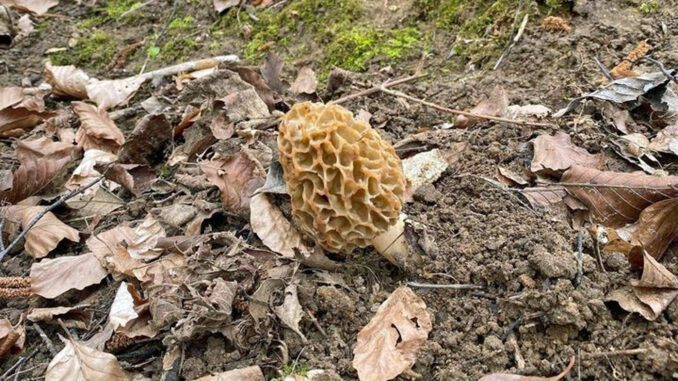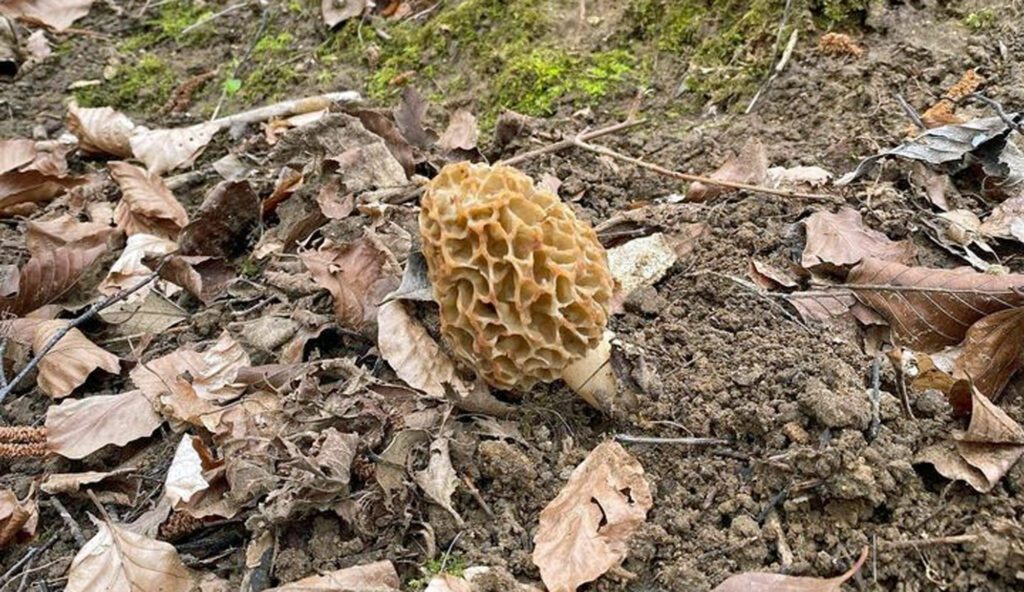
What To Look For Morel Hunting? Discover these elements in our article.
Let’s get started!

For morel hunting, it is essential to observe several straightforward elements:
- the right trees (ash, elm, hazelnut trees…)
- the right soil (limestone soil)
- Areas that are both damp and well-exposed.
Let’s delve a little deeper into each of these elements in the rest of the article!
Furthermore, if you want to directly know the best morel spots in your state, check out our Morel Maps, available here!
The Right Trees To Look For Morel Hunting
This is the first thing you should look for when going morel hunting and this is arguably the most important element. Here is a non-exhaustive list of the most promising trees to find morels:
- For deciduous trees: Ash, Aspen, Maple, Apple tree, Elm, Hazel tree…
- For coniferous trees: Spruce, Fir, Larch.
The Right Soil To Look For Morel Mushrooms
The key point to remember about morels is that they generally prefer neutral to basic soil (limestone soil), but they can also thrive in slightly acidic conditions if other factors are favorable (trees, climate, etc.).
To validate neutral to basic soil while foraging, look for abundant neutrophilic and calcicole plants like ground ivy, ficaria, hawkweed, wild garlic, white anemone, fetid hellebore, male orchis, and primrose.
Damp And Well-exposed
The morel will grow in areas that are well-exposed, meaning they receive plenty of light and warmth, but generally, under a slight shade, especially under the trees where the soil is slightly more damp.
A good way to create the ideal climate for morel growth is to search for them along the riverbanks in well-exposed areas or on the edges of forests, where moisture and exposure are significant.
Find Morels With Our Maps!
Do you want to know exactly where to find morels while also learning to identify each important element of their habitat? Discover our Morel Maps here!
Leave a Reply